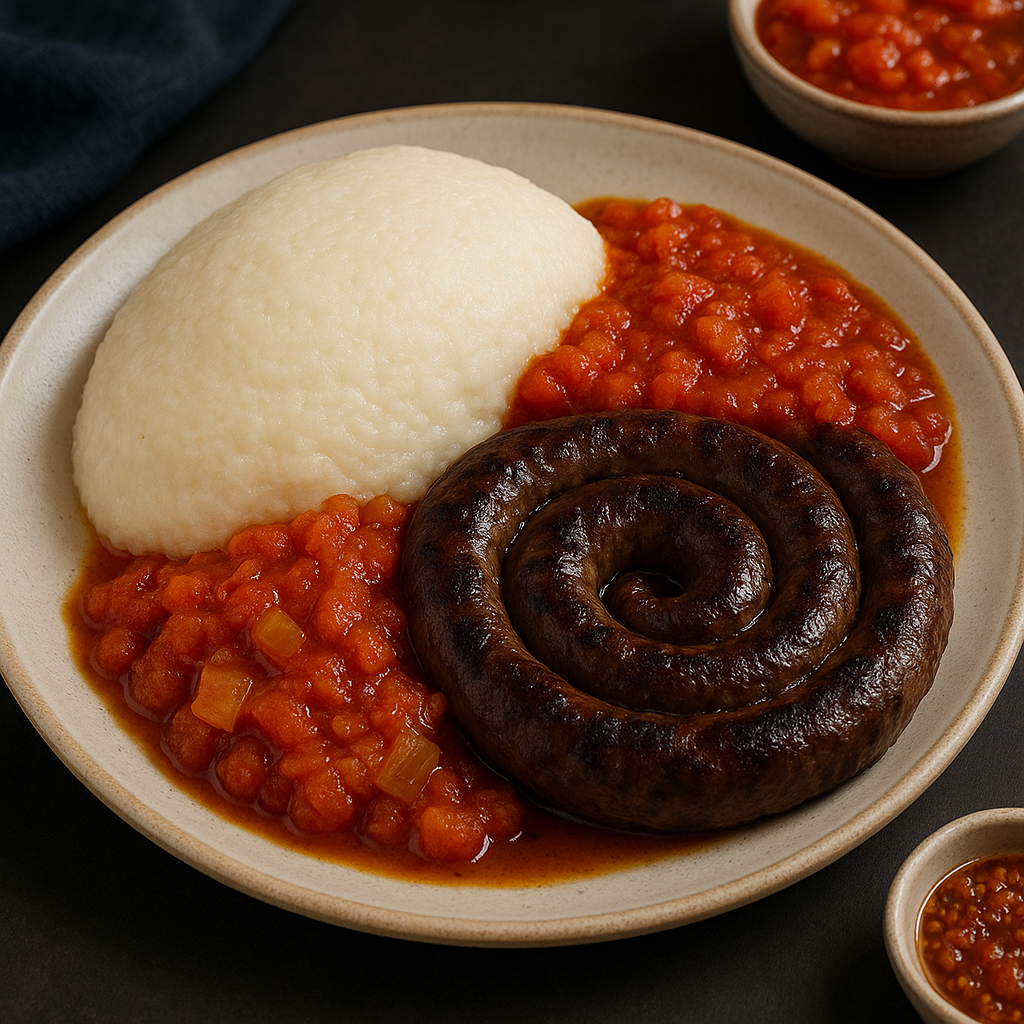South Africa is known for its stunning landscapes, vibrant culture, and unique cuisine. One in particular, Pap and Wors, holds a special place in the hearts of many locals. Considered a traditional dish in South Africa, Pap en Wors is a unique combination of flavours that can be traced back to the country’s earliest years.
In this article, we’ll take a closer look at this delightful dish, covering everything from its origins to its preparation. Whether you’re a foodie looking to try something new or you’re simply curious about the South African culture, read on and discover the wonders of Pap and Wors.

What Is Pap and Wors?
Pap and Wors translates to “pap and sausage” in English. It’s a classic South African dish that’s made up of two main components: pap, a soft and thick porridge made from maize meal, and wors, which refers to a variety of sausage types. When combined, the two create a delicious and comforting meal that’s perfect for a traditional South African feast.
Origins of Pap and Wors
The origins of Pap en Wors can be traced back to the indigenous cultures of South Africa. The dish is characteristic of the Nguni-speaking tribes, including the Zulus, Xhosa, and Ubie. It was traditionally served as a staple food and is accompanied by relishes and other meats for special occasions, such as weddings, funerals, and family gatherings.
Today, Pap en Wors is still a staple dish in many South African homes, and it’s also enjoyed at braais (barbecues) and traditional celebrations. The dish is also a common choice at events like sports games and picnics, making it a favorite among locals and visitors alike.
Preparing Pap and Wors
The preparation of Pap en Wors can vary depending on the region and the individual chef. However, the general process typically involves the following steps:
Making the Pap:
The first step in preparing Pap en Wors is to make the pap. This entails mixing maize meal with water and boiling it over a low heat until it thickens to the desired consistency. Once the pap is done, it is served in a large bowl and is placed in the center of the table for everyone to share.
Making the Wors:
The next step in the preparation process is to make the wors. The exact method for making wors can vary depending on the type of sausage being used, but it generally involves stuffing a casing with minced meat, spices, and other ingredients and then grilling it until it’s cooked through. Once the sausage is done, it is sliced into pieces and placed next to the pap on the table.
Serving with Accompaniments:
Finally, Pap en Wors is served alongside a variety of accompaniments. These can include chakalaka (a spicy, tomato-based relish), sambal (a condiment made from chili, onions, and vinegar), and fried or grilled meats. Alternatively, the dish can be served with other vegetables, salads, and sauces.
Variations of Pap and Wors
There are many different variations of Pap en Wors that can be found throughout South Africa. For example, in the Eastern Cape region, Pap is often served with umngqusho, a traditional Xhosa dish made from maize, sugar beans, and chili. In the Limpopo region, the type of pap used can vary depending on the family or personal preference.
In addition, wurst is sometimes used in place of wors, as the German sausage was brought to South Africa during the colonial period. Other variations of the dish include adding vegetables to the pap, or combining it with other types of meats or stews.
Conclusion
Pap en Wors is truly a South African delicacy. Combining the comforting flavors of pap with the smoky, savory taste of sausage, this dish captures the essence of traditional South African cuisine. If you ever have the opportunity to try Pap en Wors, don’t miss it – it’s a real treat that is enjoyed by many in South Africa.
Leave a Reply